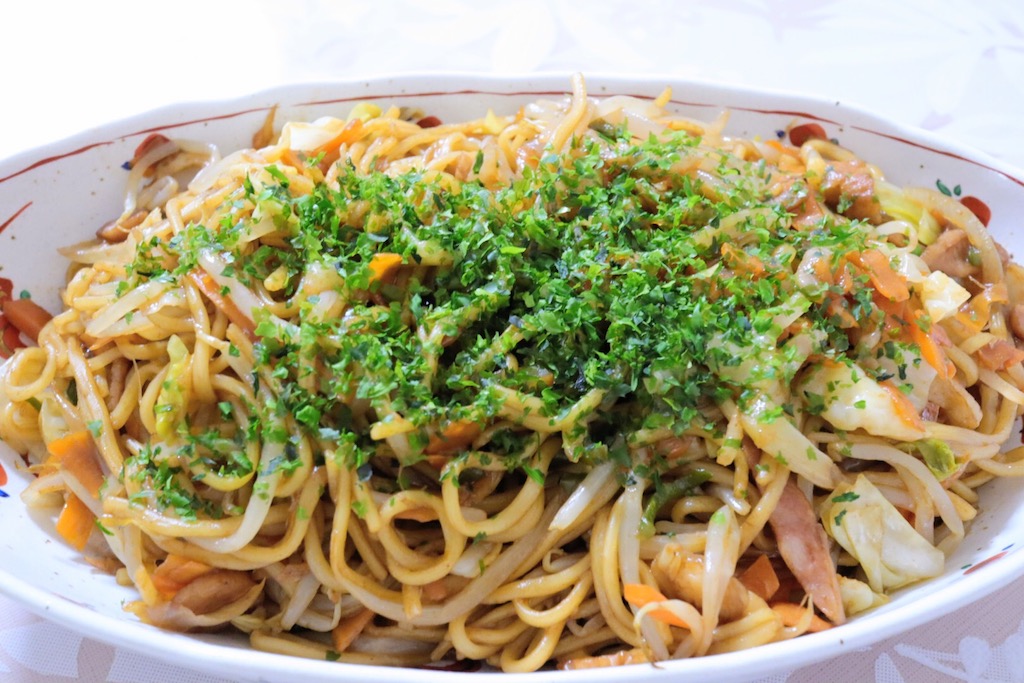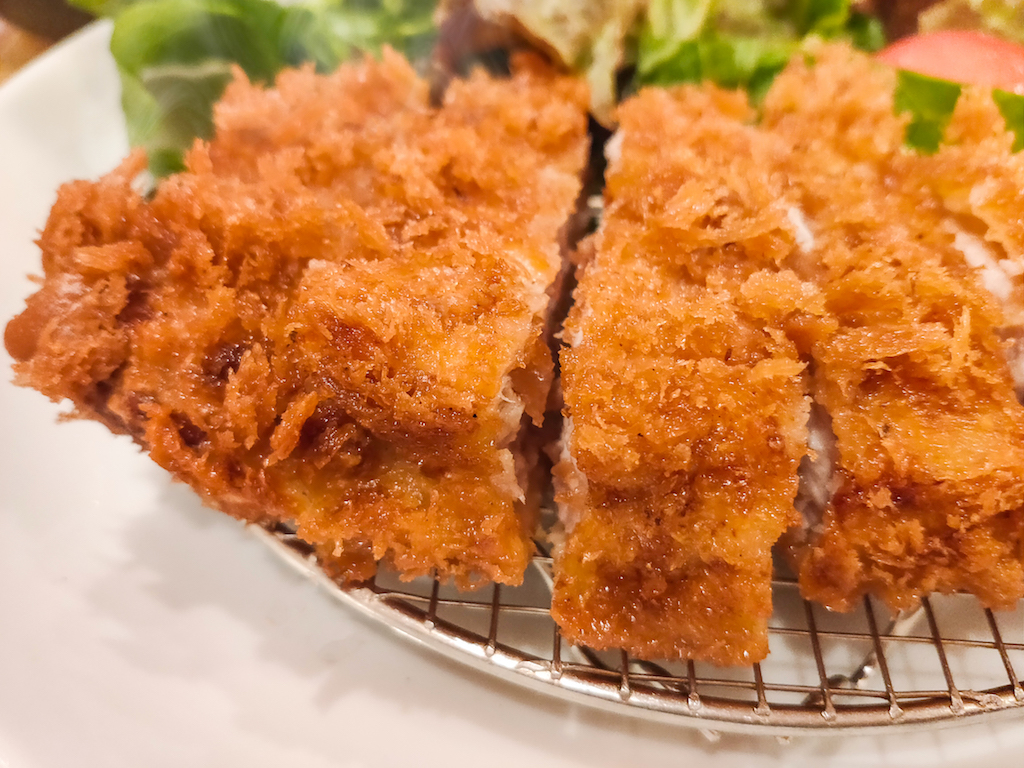What Is Aonori Flakes?
Aonori flakes are called “dried green seaweed” or “dried green laver” in English.
It’s made by drying and powdering aonori which is a type of seaweed.
Aonori can be eaten raw if it is fresh, but normally dried and powdered aonori flakes are widely used in Japan.
By the way, the word “seaweed” covers a lot of types of Japanese foods as followings:
・Aonori (Green Laver)
・Hijiki
・Kombu (Kelp)
・Mozuku
・Nori (Laver)
・Wakame
The taste and appearance of aonori are totally different from other types of seaweed. But the most similar one is “nori”.
Nori is black in color, and usually made into a large square. Aonori, on the other hand, green in color, and are generally processed into flakes.
Both of them can be used as topping for various dishes, but aonori has much stronger flavor than nori and is very suitable for the topping. Nori is used mainly for rolling sushi or rice balls (onigiri).
What’s the Difference Between Aonori and Aosa?
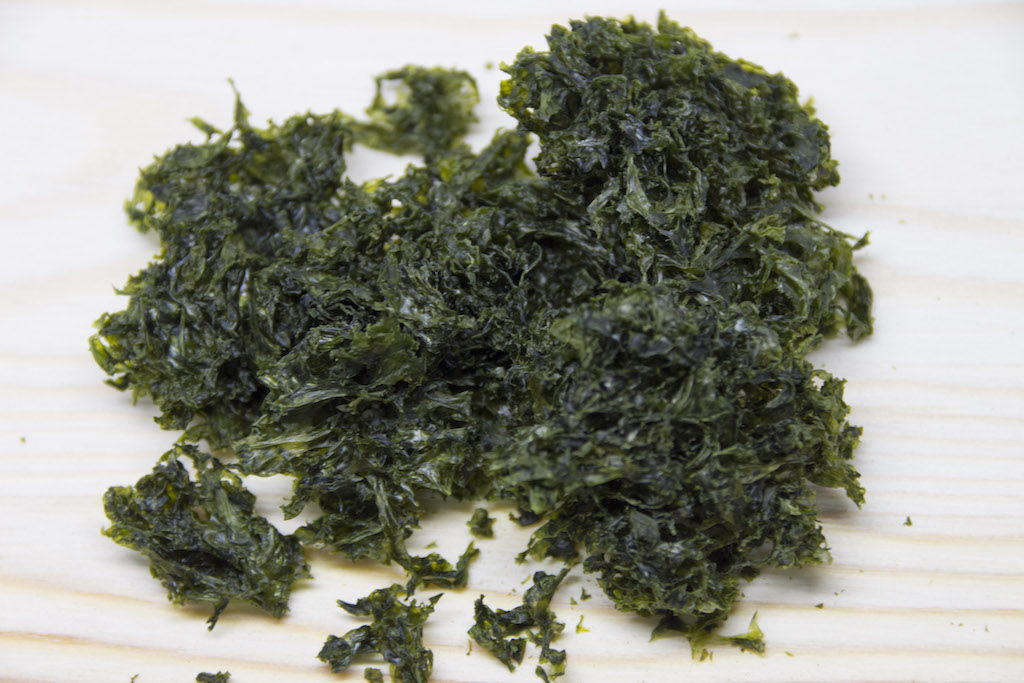 ▲Aosa
▲Aosa
There is a very similar food called “Aosa” which is also a type of seaweed. Both aonori and aosa are actually belong to the same genus, “the genus Aosa”.
Although they have a different name, their appearance, taste, and use are almost the same.
When you see the nutrition facts on the package of aonori flakes (dried green laver), you will see “aonori” or “aosa” as a main material. Sometimes both of them are used.
What Does Aonori Flakes Taste Like?
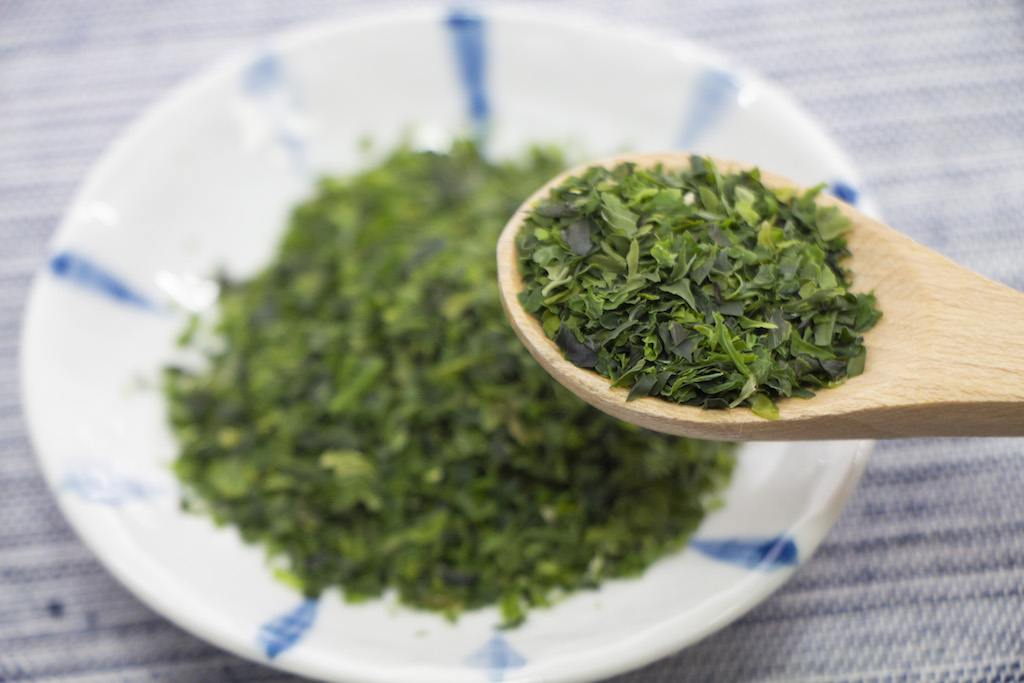
Aonori flakes are pretty fine shape, so you don’t really feel texture in your mouth. But the flavor is considerably strong and great. Unlike typical seaweed, aonori doesn’t have unique fishy smell of seaweed. It has savory smell that makes you hungry.
How Is Aonori Flakes Used?
Used as Topping
Aonori flakes are often used as topping for dishes with Japanese Worcestershire sauce, for example, yakisoba, takoyaki, and okonomiyaki. It can not only improve the color coordination of the dish with bright green color, but also add great flavor to the dish.
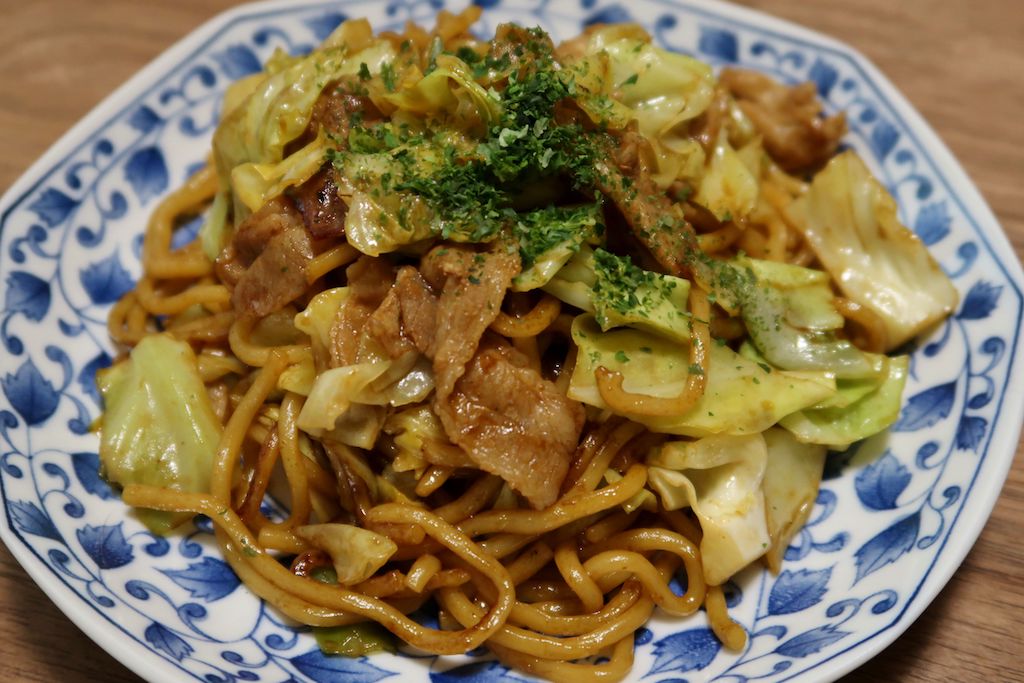 ▲Yakisoba Topped with Aonori
▲Yakisoba Topped with Aonori
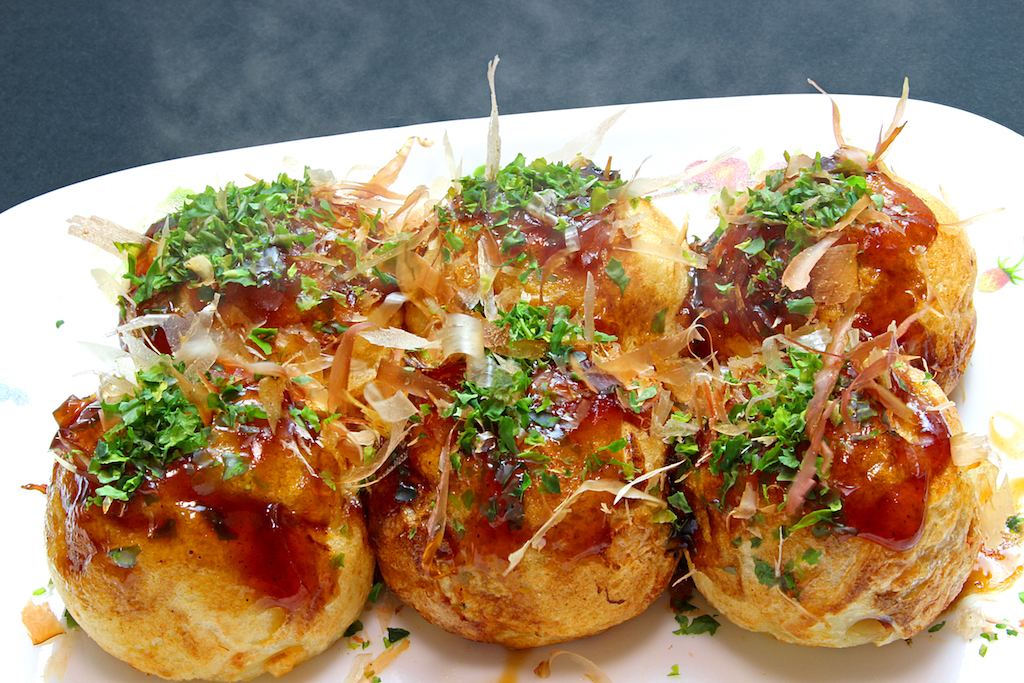 ▲Takoyaki Topped with Aonori
▲Takoyaki Topped with Aonori
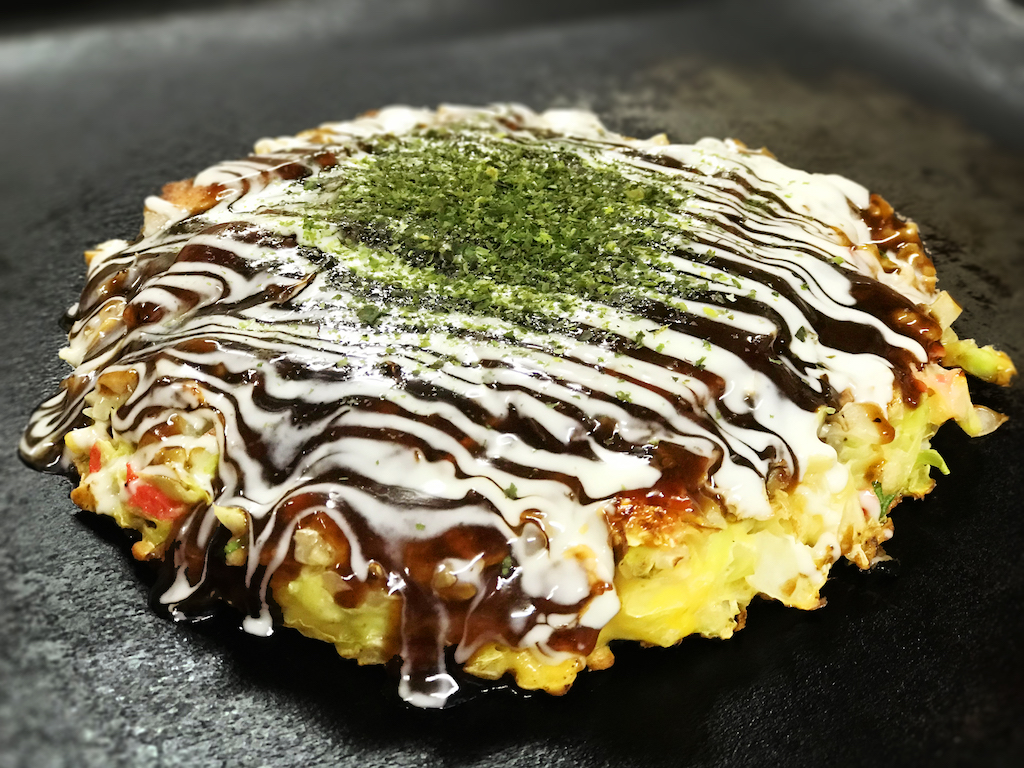 ▲Okonomiyaki Topped with Aonori
▲Okonomiyaki Topped with Aonori
Used for Tempura
Aonori is also used in tempura. By putting a little aonori flakes in the tempura batter, the tempura become unbelievably savory and tasty. The tempura with aonori flakes are usually called “Isobe-age” in Japanese.
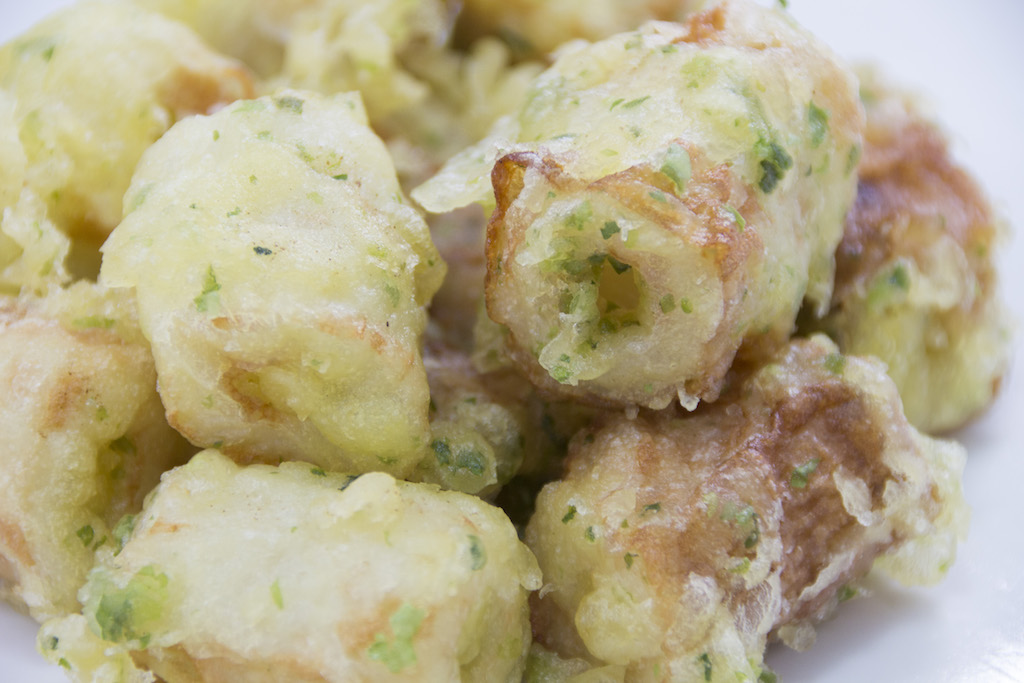 ▲Isobe-age of Chikuwa (Fish Stick)
▲Isobe-age of Chikuwa (Fish Stick)
Used for Snack
Potato chips and rice crackers flavored with aonori are very popular snack in Japan.
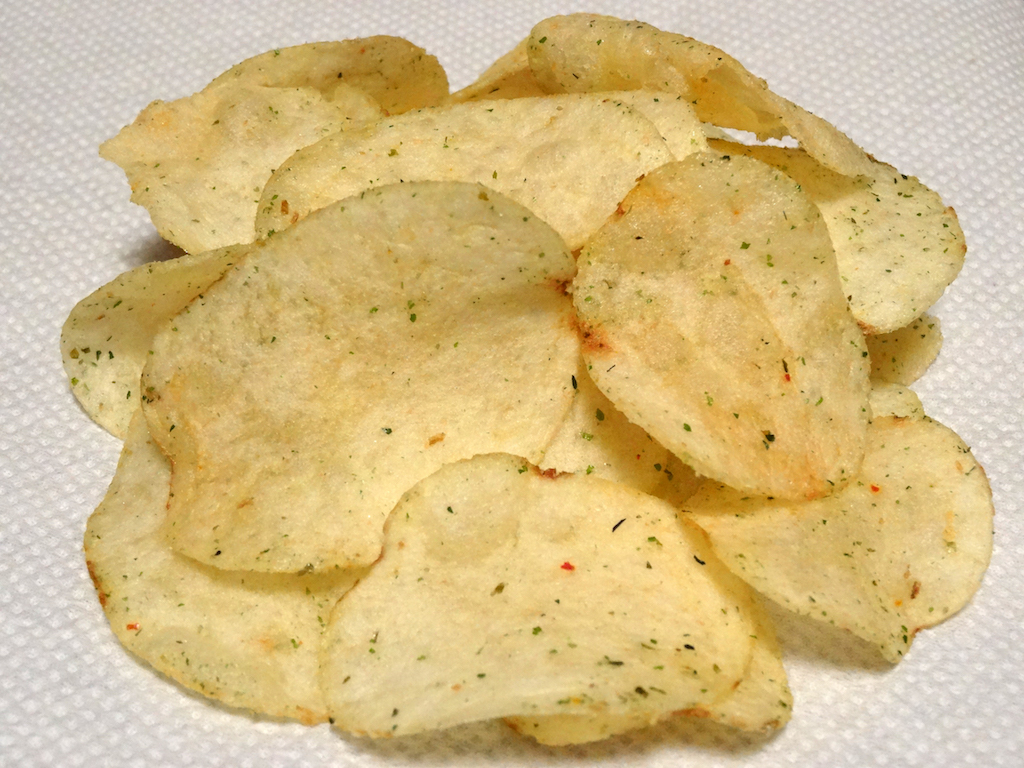 ▲Potato Chips Flavored with Aonori and Salt
▲Potato Chips Flavored with Aonori and Salt
Used for Ingredient in Rice Ball
The mixture of aonori, tenkasu (crunchy bits of fried batter left after cooking tempura), and soy sauce / mentsuyu can be extremely delicious ingredient for rice ball.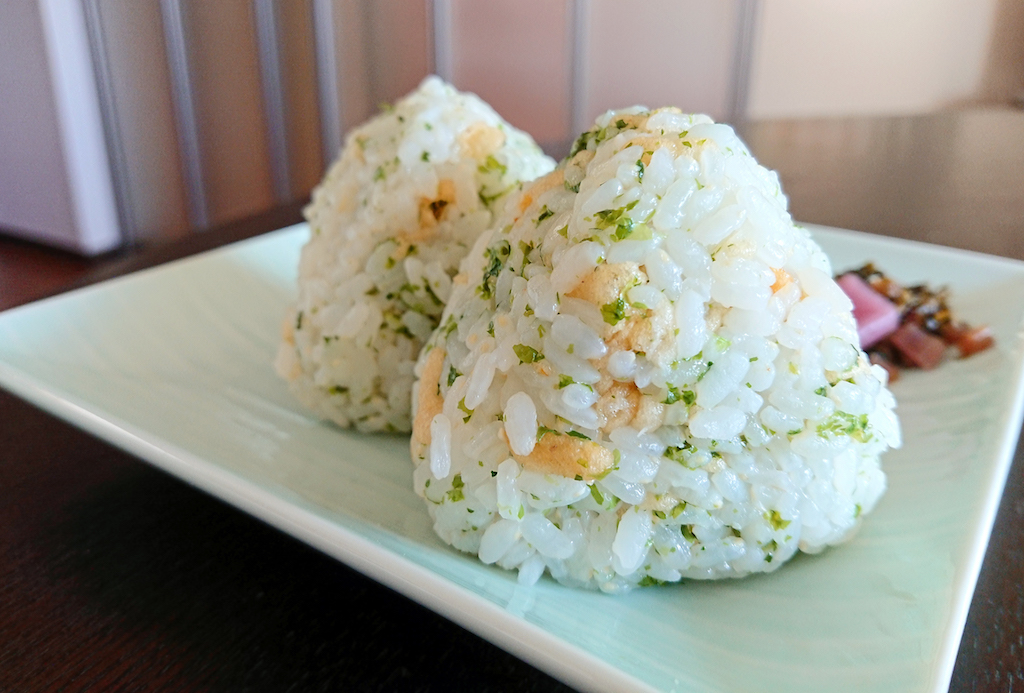
By the way, there are some aonori or aosa that is not flakes but dried with a little shape left. Those aonori and aosa are sometimes used as ingredients for miso soup or tempura.
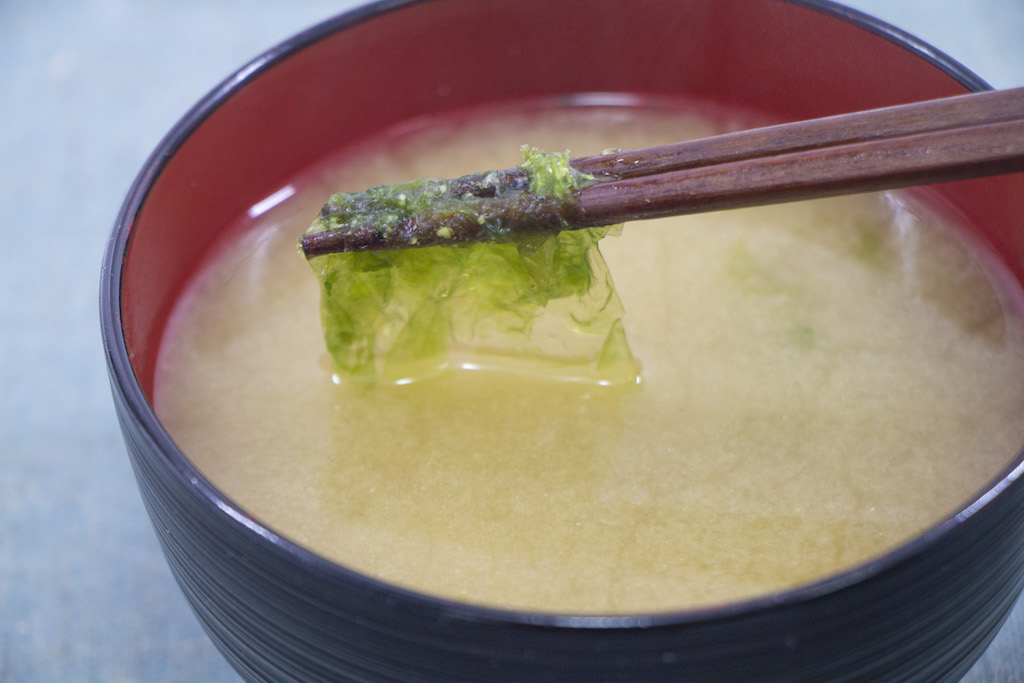
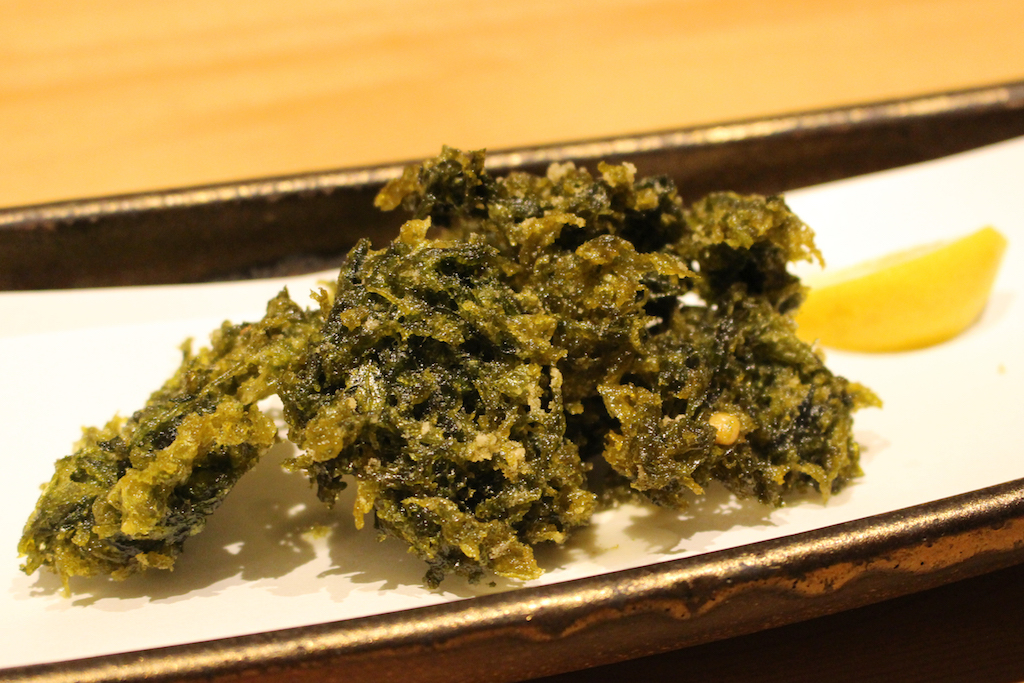
Nutrition of Aonori (Dried)
Below you will find the nutrition information for a 3.5 oz (100g) of dried aonori:
・Calories: 164kcal
・Water: 6.5g
・Total Carbohydrates: 41g
└Dietary Fiber: 35.2g
・Total Fat: 5.2g
・Protein: 29.4g
・Minerals
└Sodium: 3200mg
└Potassium: 2500mg
└Calcium: 750mg
└Magnesium: 1400mg
└Phosphorus: 390mg
└Iron: 77mg
└Zinc: 1.6mg
・Vitamins
└Niacin: 6.3mg
└Vitamin C: 62mg
└Vitamin E: 2.5mg
└Vitamin B1: 0.92mg
└Vitamin B2: 1.66mg
└Beta-carotene: 20mg
└Other Vitamins: 1.4mg (Vitamin B6, Pantothenic acid, Folic acid, etc)
What Are the Benefits of Eating Aonori
Aonori is very nutrient-rich seaweed. Aonori (Aosa) contains abundant water-soluble dietary fiber that could help to improve the intestinal environment, and suppress the rapid rise in blood sugar level.
Beta-carotene contained in aonori could be the substitute for the lack of Vitamin A, and you can expect that it works for maintaining healthy skin, eyes and mucous membranes.
What Can I Use Instead of Aonori Flakes?
7 Best Aonori Flakes Substitutes

